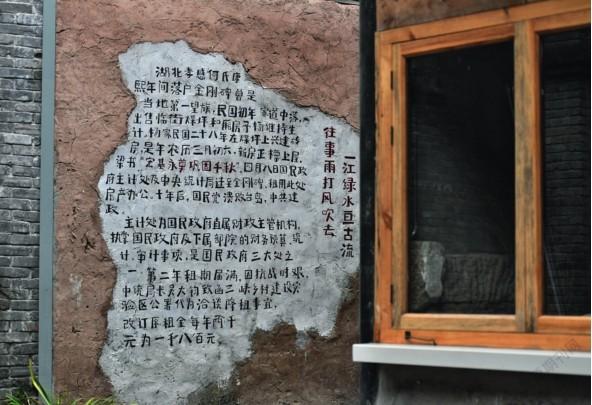镜像里的金刚碑
2021-09-10刘晓娜曾馨乐
刘晓娜 曾馨乐
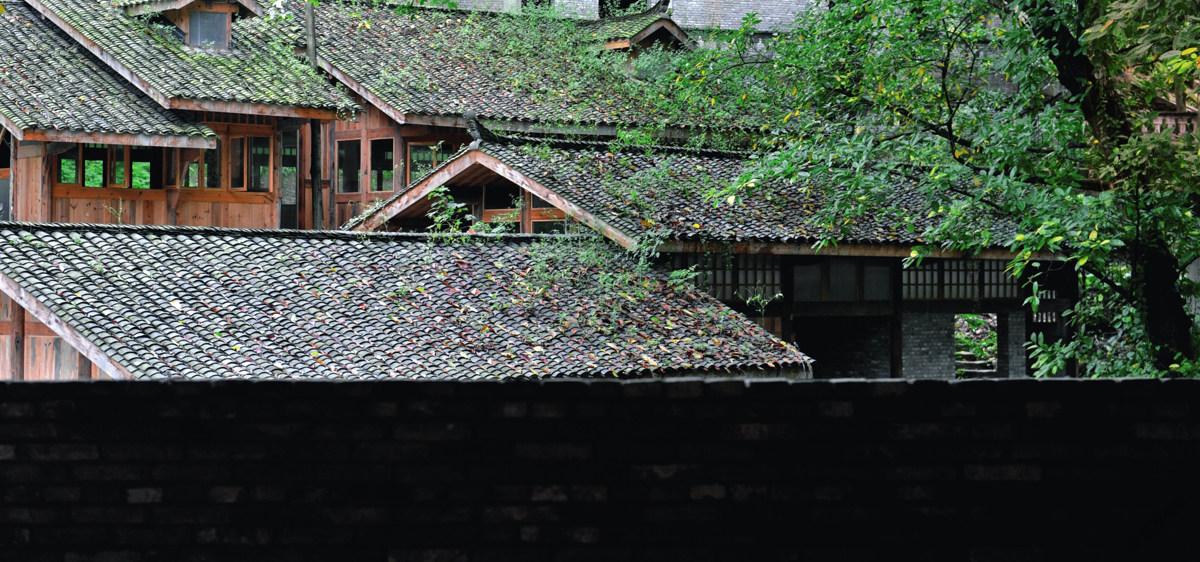
5年前的一个温暖冬日,我第一次走进北碚金刚碑,就被这个古老的村镇所吸引。以至于5年来,每当冬天出太阳,脑海里不自觉地就会浮现金刚碑居民在溪谷边晒太阳的画面,那种温暖的触感,就像祖母的手在轻抚额头。
那次探访不久,金刚碑历史文化街区修缮修复项目便启动了。目前,核心区修缮工作已全部完工,金刚碑即将重新开街的消息不胫而走。网友们打卡的照片,再次勾起了我的强烈欲望,一定要在开街前再会会这位“老朋友”。
Five years ago, I was attracted by this ancient village when I first walked into Beibei King Kong Monument on a warm winter day. In the past five years, whenever the sun shone in winter, the image of King Kong Monument residents sunbathing by the stream valley would come to my mind. The warm touch is like my grandmother’s hand gently caressing my forehead.
Shortly after that visit, the project of restoring the historical and cultural block of King Kong Monument was launched. At present, the repairing work of the core area has been completed, and the news that the King Kong Monument is about to reopen has spread like wildfire. After seeing the photos taken by the netizens in the historical and cultural block of King Kong Monument, I had a strong urge to visit my "old friend" again before the street opening.
變与不变What Changed and What Stayed the Same
重逢发生在7月的一场雨后。
以缙云山的云雾缭绕为背景,从北泉路一个不起眼的岔路口拐进,沿蜿蜒的下坡路朝嘉陵江前进。这是一段惬意的步行,置身山峦拱翠之中,蝉鸣此起彼伏,湿漉漉的空气附着在皮肤表面,颇有“空山新雨后”的意境。
数百米后,当一群参差不齐的屋顶在山谷间涌现时,便到了金刚碑。回想5年前的初次造访,金刚碑非常隐蔽、难寻,当我们从一个酒店的停车场穿入老街时,竟有一种误闯私宅的冒失感。
而此刻,当一栋名为“秋霞的城堡”的房子闯入眼帘时,我隐约预感到:沧桑的金刚碑也许正在变成一个活泼、酷炫、文艺的“潮老太”,她以一种开放热情的姿态迎接游人。
在强烈的好奇和忐忑中,我们踏上石梯,一步一步下到溪谷,走入金刚碑的腹心。
再次走在老街,我确信这已经不是上一次看到的金刚碑,但又很难一眼分辨出具体的改变。肉眼望去,新与旧似乎已经融为一体。
变与不变,需要用感官细细捕捉。街道的肌理、建筑的布局、古镇的气质,似乎都还是我印象中的金刚碑,她仿佛并没有改变。
仔细观察,她又的确变了,屋顶的木料还散发着新鲜的气息,木质纹路清晰可见;原有的土坯、砖墙之上,加入了金属框架和玻璃,看上去时尚、牢固。某种程度上,这些局部的改变或许削弱了金刚碑的沧桑感,却也让她看上去更加健康,不再摇摇欲坠。
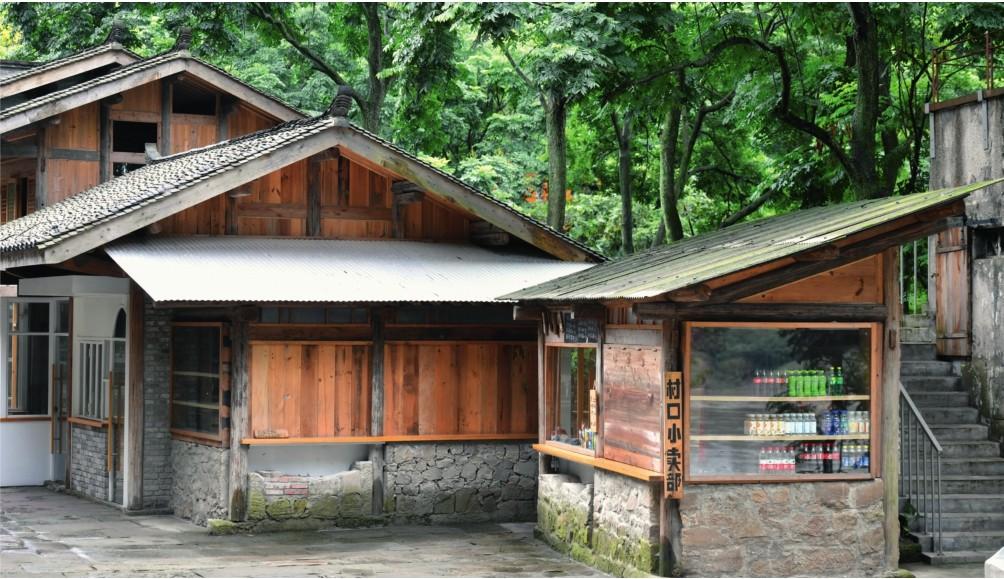
The reunion came after a rain in July.
With clouds gathered above Jinyun Mountain, I turned in from an inconspicuous fork in Beiquan Road and proceeded along the winding downhill road toward Jialing River. It was a pleasant walk. In the arched green mountains, cicadas were chirping and the moist air kept your skin lubricated, reminding me of the poem,"After the Rain Freshens the Empty Hills".
A few hundred meters later, King Kong Monument was visible as a jagged array of roofs emerging in the valley. Looking back to our first visit five years ago, the King Kong Monument was very hidden and hard to find. When we crossed into the old street from a hotel parking lot, we had a sense of trespassing in a private house.
At that moment, when a house called "Qiuxia’s Castle" came into view, I had a vague feeling that the vicissitudes of King Kong Monument may be turning into a lively, cool and literary "Hip Old Lady", who welcomes visitors with an open and enthusiastic attitude.
With intense curiosity and apprehension, we stepped onto the stone stairs, descended step by step into the valley of the stream, and walked into the belly of the King Kong Monument.
Walking down the old street again, I was certain that this was not the same King Kong Monument I had last seen, but it was hard to tell exactly what had changed at a glance. To the naked eye, the new and the old seemed to have merged into one.
What changed and what stayed the same need you to feel with the senses. The texture of the streets, the layout of the buildings, and the atmosphere of the ancient town are the same as the King Kong Monument in my memory, as if she had not changed.
Upon closer inspection, she has indeed changed. The wood of the roof still smelt fresh and the wood grain was clearly visible; the original adobe and brick walls had been topped with metal frames and glass, looking stylish and solid. To some extent, these local changes may have weakened the vicissitudes of King Kong Monument, but also made her look more healthy and less shaky.
直接的表達Direct Expression
如果说过去的金刚碑是一位含蓄的老人,所有的温暖都表达在日常生活中,就像茶馆里终日翻腾的开水,有朴素、热闹的烟火气。
那么,今天的金刚碑变得更加直接,仿佛要将几百年的文化底蕴通通写在脸上,用今天的话语可以解读为“文艺范儿”:一块指路石上刻着“飘零巷”,原生态地名更加显露地传达着诗意;连接两条巷道的门廊上刻着“曲折竟时、溪入嘉陵”,这条窄窄的廊道竟然也有个专门的名字——“曲折廊”;横跨小溪的风雨廊桥名叫“过溪楼”……
给一栋楼一座桥取个诗意的名字,这样的雅兴古已有之。今天的金刚碑还有更大胆的表达:一栋房子的故事被写在墙上。仅从房前走过,就能了解屋主的曾经。
比如那栋名叫“秋霞的城堡”的房子,屋主李兴喜是改革开放后的金刚碑首富,1987年落成这栋房子后,他的女儿秋霞最喜欢夏天在屋顶数星星。又比如,一位生于1929年的屋主秦定权,以养马驮运煤炭谋生,一家六口拥挤在土坯房中,直到上世纪八十年代才从溪沟挑拣荒石垒砌成屋。
我们虽没见到秋霞,却通过墙上的涂鸦,想象着她说这番话的模样;虽然不知道秦定权是否尚在人间,但他的名字将被来往的游客一次次注视。一个有温度的金刚碑,正以这种方式徐徐走来。
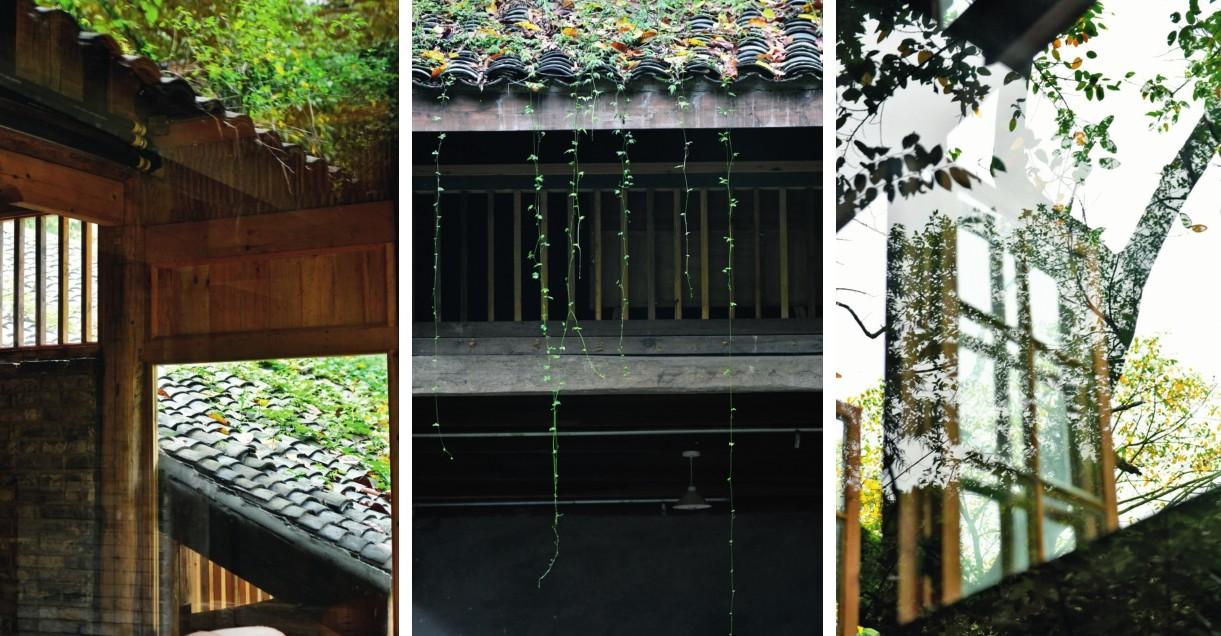
If the King Kong Monument in the past was an implicit old man, all the warmth was expressed in daily life, just like the boiling water churning all day long in a teahouse, with simple and lively fireworks.
Then, today’s King Kong Monument has become more direct, as if to write all the cultural details of hundreds of years on the face, which can be interpreted as "literary style" in today’s words: a guiding stone is engraved with "Piaoling Lane", and the original ecological place name is more poetic; The porch connecting the two lanes is engraved with "When the twists and turns, the stream enters Jialing". This narrow corridor even has a special name-"Quzhe Corridor"; The all-weather bridge across the stream is called "Guoxi Floor".
The elegance of giving a building or a bridge a poetic name has existed since ancient times. Today’s King Kong Monument has an even bolder expression: the story of a house is written on the wall. Just walking in front of the house, you can know the past of the owner.
For example, the owner of the house called "Qiuxia’s Castle", Li Xingxi, is the richest man in the King Kong Monument after the reform and opening up. After the house was completed in 1987, his daughter Qiuxia liked to count stars on the roof in summer. Another example is Qin Dingquan, a homeowner who was born in 1929. He made his living by raising horses to carry coal, and his family of six was cramped in an adobe house until the 1980s, when they picked up barren rocks from a ravine to build a house.
Although we did not see Qiu Xia, we imagined through the graffiti on the wall what she looked like when she said these words. Although we don’t know if Qin Dingquan is still alive, his name will be known by coming visitors. A King Kong monument with temperature is coming slowly in this way.
時间的倒影Reflection of Time
金刚碑曾被称为“古渝州最偏远的山村”,也许正是偏远、隐蔽,让它得以用自己的方式慢慢生长、改变。
今天,我们在种种修缮细节中看到一种审慎、柔和的态度:既要尊重历史、凸显底蕴,又要努力与这个时代的审美相结合。更具现代感的设计,正小心翼翼地融入金刚碑,这像是一个年轻人与老者的对话,试图彰显自己的艺术主张,同时又不得不考虑对方的接纳程度。
地处溪谷山涧中的金刚碑,空间上的延伸始终受制于两侧的高山。在现代建筑元素的加持下,这种局促正在被打破。镜面、玻璃幕墙的大量运用,扩宽了视觉中的金刚碑。在光的反射下,古树、建筑、行人都被1:1复制出来,眼前的世界与镜中的世界交织在一起,打破了几百年来金刚碑的固有光影形态,妙趣横生。
透过镜像中的金刚碑,我们捕捉到的不只是古老的村落,还有自己行走其间的身影,历史与当下交错在镜面内外,以更加强烈的反差感冲击着我们的视野。老街、建筑、人,无不在其中。
细心的人会发现,“营造者物语”以小小的字迹写在墙角处,低调却又无处不在,成为金刚碑新的烙印。大大小小的人物在金刚碑留下过故事,今天的人们又何尝不想将自己也镌刻在历史中。
于缙云山而言,金刚碑是山脚下渺小的存在,行走在金刚碑的我们更是时间长河里的一粒沙。可是,再细碎的沙子都会在时间之镜留下痕迹,我们和金刚碑,都将在时间里不断前行,在镜面的反射中,学会如何更好地去观照当下的自己,享受行走在金刚碑的这段时光。
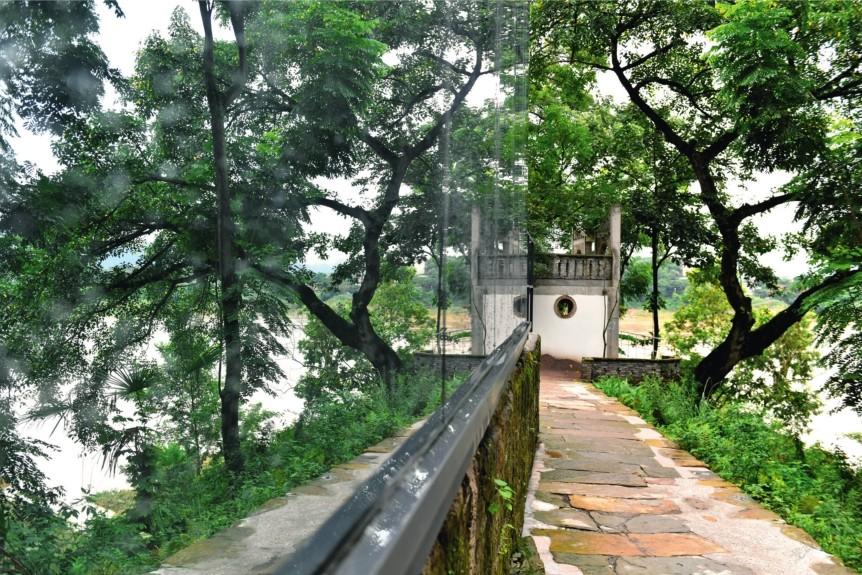
King Kong Monument was once called "the most remote village in ancient Yuzhou". Perhaps it was the remoteness and seclusion that allowed it to grow and change slowly in its own way.
Today, we see a prudent and soft attitude in all kinds of repairing details: it is important to respect history and highlight the heritage, but also to try to combine with the aesthetics of this era. A more contemporary design is being carefully integrated into the King Kong Monument. It is like a dialogue between a young man and an old man, trying to manifest his artistic proposition while having to consider the other’s acceptance.
Located in the valley and mountain stream, the spatial extension of King Kong Monument is always restricted by the high mountains on both sides. With the blessing of modern architectural elements, this constraint is being broken. The extensive use of mirror and glass curtain walls broadens the King Kong Monument in vision. In the reflection of the light, ancient trees, buildings and pedestrians are replicated one to one. The world in front of us is intertwined with the world in the mirror, breaking the inherent light and shadow form of King Kong Monument for hundreds of years, which is full of fun and humor.
Through the King Kong Monument in the mirror image, we capture not only the ancient villages, but also our own figures walking in it. History and the present are intertwined inside and outside the mirror, impacting our vision with a stronger sense of contrast. Old streets, buildings and people are all in it.
Attentive people will find that "The Story of the Builder" was written in small handwriting in the corner, which is low-key but ubiquitous, and has become a new brand of King Kong Monument. People, great and small, have left their stories in King Kong Monument, but today’s people also want to engrave themselves in history.
Compared with Jinyun Mountain, the King Kong Monument at the foot of the mountain is negligible. And we are a grain of sand in the long river of time walking in King Kong Monument. However, even the finest sand will leave traces in the mirror of time. We, and King Kong Monument, will both keep moving forward in time, learning how to better observe ourselves in the present moment in the reflection of the mirror, and enjoying our walk in King Kong Monumen.
